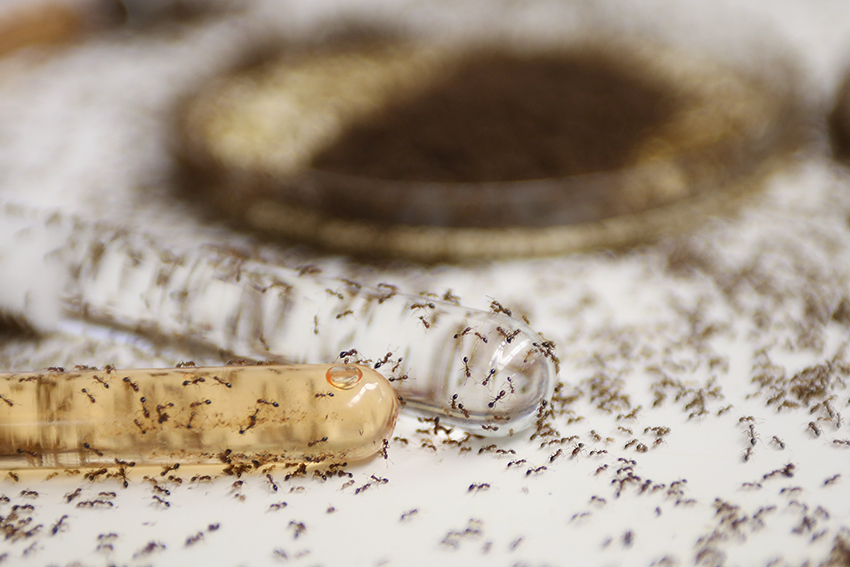UT researchers are shaking the ants out of Texan pants.
UT’s invasive species research program introduced South American phorid flies to control invasive fire ant populations in Texas, with the help of other research labs — including the USDA and Quilmes University in Argentina.
These flies are the fire ants’ natural enemies, and they may hold the key toward reducing the use of pesticides.
The invasive South American fire ants have taken a heavy economic and ecological toll on Texas. Fire ants cost the state of Texas over $1 billion per year, according to a study at Texas A&M University.
Bringing the flies from South America could help control the fire ant pests and reduce costs, according to Robert Plowes, a research scientist at Brackenridge Lab.
“If you go back to the home ranges where these invasive pests come from, you can often find their natural enemies and better understand what controls them there,” Plowes said.
Phorid flies, which are about a millimeter long, turn fire ants into living incubators for their offspring. A fly injects an egg into an ant’s thorax. The egg hatches and the larva wiggles into the ant’s head, where it grows.
Eventually, the larva manipulates the worker to abandon its nest and find a dark, moist place suitable for the fly’s development. The ant finally dies, and the fly decapitates its host before emerging in two weeks to repeat the cycle.
The deaths of individual workers aren’t important in terms of population control, since a fire ant nest may contain 100,000 or more workers underground.
“Because of their social behavior, ants are difficult to think about as individuals,” Plowes said. “It’s helpful to think about them like leaves on a tree. If you pick off a few leaves, the tree won’t be harmed. You need to limit resources that can weaken the entire tree.”
Plowes said that the way ants react when they notice hovering phorid flies is important.
“Ants are aware of the flies, just as we’re very aware of mosquitoes buzzing around,” Plowes said.
Food-gathering workers reduce foraging activity when they notice flies nearby, limiting the colony’s growth. The presence of one fly can control the behavior of several hundred ants and impact the wellbeing of several hundred thousand.
“We want to stop the ants from feeding,” Plowes said. “Imagine you were sitting at a restaurant and someone pulled the fire alarm.”
Effective pest biocontrol is better than chemical alternatives because it is less harmful for the environment. Pesticides are rarely species-specific, but parasitoids such as phorid flies are, according to Nathan Jones, UT research associate. Texan flies never attack South American fire ants.
“The flies are very much a product of coevolution,” Jones said. “This had to be a pretty tight relationship.”
Phorid flies are able to eavesdrop on some ants’ pheromones, the chemicals they use to communicate. Each ant species has its own set of pheromones, just like human populations have different languages.
“That chemical language is very host-specific,” Jones said. “Particular species of flies are able to tap into the communication lines of particular species of ants.”
Researchers have released some South American fly species in Texas and have studied their effect on ant populations over the last five years. Plowes said it’s still too soon to tell if they’ve had a significant effect.
“Given the lifespan of a colony, it could be 12 or more years before we can measure the flies’ impact,” Plowes said.
Ideally, the flies will put environmental pressure on South American fire ants, potentially reducing their population growth rate. This would allow some space for Texan species to recuperate.
“We’ll never eliminate them; we’ll never eradicate them,” Plowes said. “At best we can hope to control them using a combination of natural enemies including parasitoids and pathogens.”





















